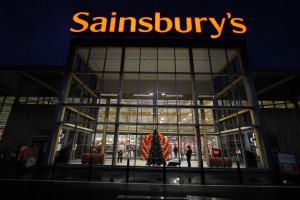Sainsbury’s has revolutionised the way its flows general merchandise product in to the UK from overseas sourcing locations. Iain Bartholomew, head of the non-food supply chain at Sainsbury’s, explained the benefits of the innovation at the Logistics and Supply Chain conference.
 The retailer faced a number of business challenges, he said. Non-food is growing at three times the rate of food. Sourcing has been shifting and imports volume have been increasing at 20 per cent year on year. It is now handling some £1bn worth of general merchandise per year.
The retailer faced a number of business challenges, he said. Non-food is growing at three times the rate of food. Sourcing has been shifting and imports volume have been increasing at 20 per cent year on year. It is now handling some £1bn worth of general merchandise per year.
All this had resulted in significant challenges to its UK infrastructure. The solution involved picking at origin so that goods can be delivered direct to store. Added value origin operations now provide 100 per cent availability of sale stock in every domestic store.
Not surprisingly, this initiative won Sainsbury’s and its logistics partner Allport Cargo Services the 2014 Logistics and Distribution Award in the European Supply Chain Excellence Awards.
Working with Allport, Sainsbury’s ran a pilot programme for Halloween 2009 handling some 60,000 cases – picking for store at origin in Asia and shipping direct. Over the five years since then the volume handled this way has grown to some 1.5 million cases.
Bartholomew highlighted the importance of the use of a control towers to manage the process. Sainsbury’s now has five sourcing offices around the world – notably in China and India.
One of the advantages of picking at origin is that infrastructure cost is avoided in the UK and more efficient store receipt for store colleagues.
Not only that, said Bartholomew, “We can pick in Asia at least as accurately as we can in UK.”
Collaboration
Collaboration was at the core of the presentation by Chris Warn, head of supply chain at Homebase. He said: “Close collaboration with suppliers is crucial to ensuring complete visibility across the supply chain.”
Warn argued that working strategically with suppliers could result in bigger savings than could be achieved in a purely transactional relationship.
At Homebase, he said the starting point had been developing a broad understanding of supplier.
It started with purchase order management – and went to speak to suppliers to get feedback on how we could operate more efficiently. What came out of that was the importance of sharing information more proactively with the supplier base.
Another example is factory to store operation where Homebase is looking to do as much work as possible at origin before bringing into UK and, if possible, direct to store.
At Christmas, Homebase brings in some 700 containers for Christmas – and failure is not an option. Warn said Homebase had worked closely with Kuehne + Nagel to take the pressure off its distribution network.
One of the results of this change of approach is that it is asking product suppliers to do things differently – particularly in terms of labelling and product handover.
The growth of e-retailing means that there are now a significant number of products that are available online only, and often the supplier will manage that delivery. In that situation, it can’t be master servant relationship, he said.
If executed correctly then the benefits of supplier collaboration have the capability to deliver sustainable benefits to both the retailer and the supplier.






